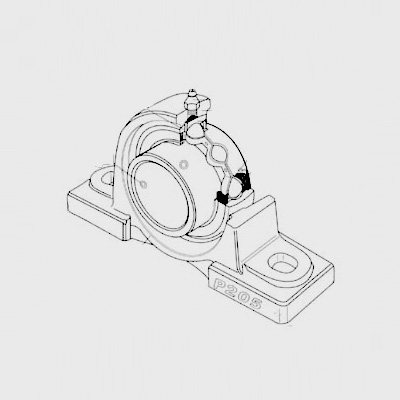
Nov . 28, 2024 15:14 Back to list
Understanding Thrust Bearings and Their Applications in Various Industries
Understanding Thrust Bearings Definition and Applications
Thrust bearings are essential mechanical components that play a crucial role in supporting axial loads in various machines and applications. Unlike traditional radial bearings, which handle loads perpendicular to the shaft, thrust bearings are specifically designed to support forces that act parallel to the shaft’s axis. This distinction makes them vital in numerous engineering solutions across multiple industries.
Definition of Thrust Bearings
At its core, a thrust bearing functions to allow rotational or linear movement while simultaneously supporting axial loads. These loads can emerge from various sources, such as the weight of a rotating component or forces generated during operation. Thrust bearings are made from durable materials such as steel, bronze, or composite materials, which are selected based on the application's requirements, including load capacity, speed, and environmental conditions.
There are several types of thrust bearings, including
1. Ball Thrust Bearings Utilize balls to reduce friction and accommodate axial loads. They are compact and efficient for moderate loads. 2. Roller Thrust Bearings Employ cylindrical rollers to handle higher axial loads and offer improved load distribution compared to ball bearings.
3. Magnetic Thrust Bearings Use magnetic fields to support loads without physical contact, leading to virtually frictionless operation, suitable for high-speed applications.
4. Fluid Thrust Bearings Rely on a thin film of fluid to separate surfaces, effectively supporting loads while reducing friction. These are often used in high-performance environments.
Applications of Thrust Bearings
what is thrust bearing where it is used

Thrust bearings are employed in a wide array of applications across various sectors
1. Automotive Industry Thrust bearings are commonly found in car transmissions, where they help manage the axial loads generated during gear shifting. They ensure smooth operation and longevity of the transmission system.
2. Marine Equipment In marine propulsion systems, thrust bearings are crucial for supporting the loads experienced by propeller shafts. They help in maintaining alignment and reducing the wear on the shaft and other components.
3. Industrial Machinery Many types of industrial machinery, such as turbines, pumps, and compressors, utilize thrust bearings. These components are critical in maintaining operational efficiency and stability by managing the axial loads generated by rotating parts.
4. Aerospace Engineering In aircraft engines, thrust bearings are essential for supporting the loads generated by thrust and rotor systems. They contribute to the overall reliability and performance of aircraft propulsion systems.
5. Heavy Machinery In construction and mining equipment, thrust bearings support heavy loads and enhance the durability of moving parts, thereby minimizing downtime and maintenance costs.
6. Renewable Energy Thrust bearings are integral to wind turbines, where they help manage the forces generated by the rotor blades while converting wind energy into electricity.
Conclusion
In summary, thrust bearings are vital components designed to support axial loads while facilitating smooth rotational or linear movement. Their specific design allows them to handle various operational demands, making them indispensable across numerous industries. From automotive and marine to aerospace and renewable energy, thrust bearings support the functionality and reliability of essential machinery and equipment. Understanding their definition and applications not only highlights their engineering significance but also aids in selecting the right type for specific needs, ultimately enhancing performance and efficiency in various mechanical systems.
Latest news
-
Premium Deep Groove Ball Bearings | High Speed & Reliability
NewsAug.29,2025
-
Durable Scaffolding Clamps - Secure & Reliable Tube Connectors
NewsAug.28,2025
-
Common Failures in Thrust Ball Bearings and Solutions
NewsAug.22,2025
-
How Tapered Roller Bearings Can Take Shock Loads
NewsAug.22,2025
-
Angular Bearings in High-Precision Spindles
NewsAug.22,2025
-
The Impact of Misalignment on Cylindrical Roller Bearing Performance
NewsAug.22,2025
